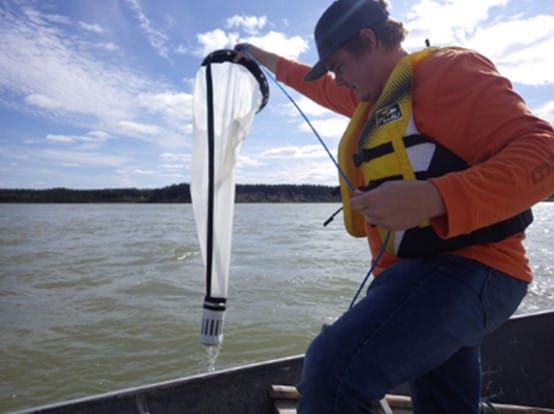LABORATORY SERVICES
AAE is involved in various projects that require fish processing. We have a state-of-the-art laboratory equipped with a -80°C freezer, microscopes, vacuum seal for cryogenic seals, and more. Staff have been trained to perform analyses including species identification, morphometric assessment, sex and maturity assignment, otolith removal, preliminary microplastic work, and stomach content removal. Preliminary processing of biological samples was also performed for stable isotope, contaminant, fatty acid, DNA, and energetics analysis.
FISH PROCESSING
We have experience processing small to large fish from marine and freshwater habitats. Ranging from Sculpin in the Beaufort Sea to Pike in small lakes. Some projects include the Canadian Beaufort Sea Marine Environmental Assessment, identifying Arctic species and taking several samples for fatty acid analysis, stable isotope analysis and DNA. Mackenzie River Salmon Research looking at spawning salmon from the Northwest Territories, taking fin clips, tissue samples and other morphometric data. As well, full dissections for fish caught in various locations in the Arctic for Environment Canada, including Pike, Lake Trout, Burbot and Arctic Char. Samples were taken for microplastic analysis, mercury analysis and metals and organic contaminants analysis.
FISH AGING
AAE has the experience, ability and equipment needed to process varying species of fish for age analysis. Fish aging can be determined by preparing different structures taken from the fish. Depending on the species an otolith, fin or scale structure may be used to analyze the age. In Northern Pike, the cleithrum, taken from the jaw of the fish can be used to determine age. The information gathered from age data can give further insight into growth rates, maximum age, age at maturity, and trends of future generations within a specific waterbody.
STOMACH CONTENT ANALYSIS
Understanding the feeding habits of fish is an important aspect of fisheries management. Stomach content analysis has become a widespread and standard practice that can provide invaluable insight into fish feeding patterns and trophic interactions. Dietary analysis can inform managers on fish behaviour, condition, habitat utilization, energy intake and inter/intra specific interactions, as well as the presence of invasive species. At AAE, we sort and identify all stomach contents to the lowest possible taxonomic level, estimate composition by count, volume and/or weight and provide representative photographs. We have experience identifying stomach contents of freshwater fish throughout Manitoba, Ontario and Arctic regions, as well as from marine arctic fishes.
LOWER TROPHIC LEVEL IDENTIFICATION
The lower trophic level includes benthic and zooplankton. Species. Benthic organisms live on and in the substrate at the bottom of lakes, rivers and streams while zooplankton organisms can be free floating throughout the water column. Both are strongly affected by their surrounding environment including sediment composition, water quality and hydrological factors. Due to their sensitivity they are excellent bioindicators that can help determine the overall quality of the aquatic habitat. At AAE Tech Services we have the knowledge and expertise necessary to sample and identify indicator species in the aquatic environment as well as to determine the complexity of a system based on the communities of invertebrates found within.





